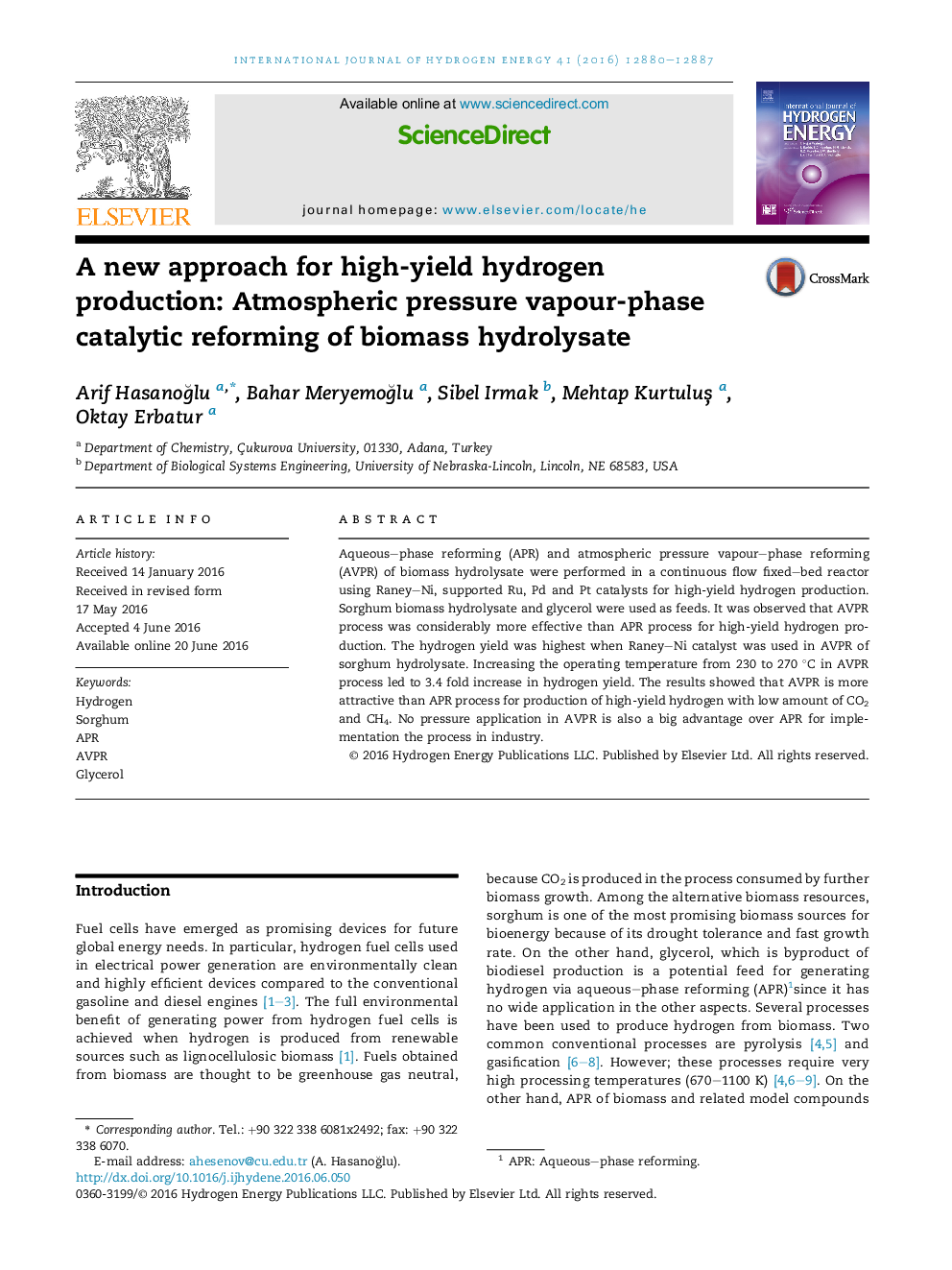| کد مقاله | کد نشریه | سال انتشار | مقاله انگلیسی | نسخه تمام متن |
|---|---|---|---|---|
| 1268201 | 1497395 | 2016 | 8 صفحه PDF | دانلود رایگان |
• AVPR and APR of sorghum hydrolysate and glycerol were studied.
• AVPR was very effective process for high-yield of hydrogen production.
• Hydrogen yield increased in higher operating temperatures.
• The lack of pressure is a big advantage for implementation AVPR in industry.
Aqueous–phase reforming (APR) and atmospheric pressure vapour–phase reforming (AVPR) of biomass hydrolysate were performed in a continuous flow fixed–bed reactor using Raney–Ni, supported Ru, Pd and Pt catalysts for high-yield hydrogen production. Sorghum biomass hydrolysate and glycerol were used as feeds. It was observed that AVPR process was considerably more effective than APR process for high-yield hydrogen production. The hydrogen yield was highest when Raney–Ni catalyst was used in AVPR of sorghum hydrolysate. Increasing the operating temperature from 230 to 270 °C in AVPR process led to 3.4 fold increase in hydrogen yield. The results showed that AVPR is more attractive than APR process for production of high-yield hydrogen with low amount of CO2 and CH4. No pressure application in AVPR is also a big advantage over APR for implementation the process in industry.
Figure optionsDownload as PowerPoint slide
Journal: International Journal of Hydrogen Energy - Volume 41, Issue 30, 10 August 2016, Pages 12880–12887
